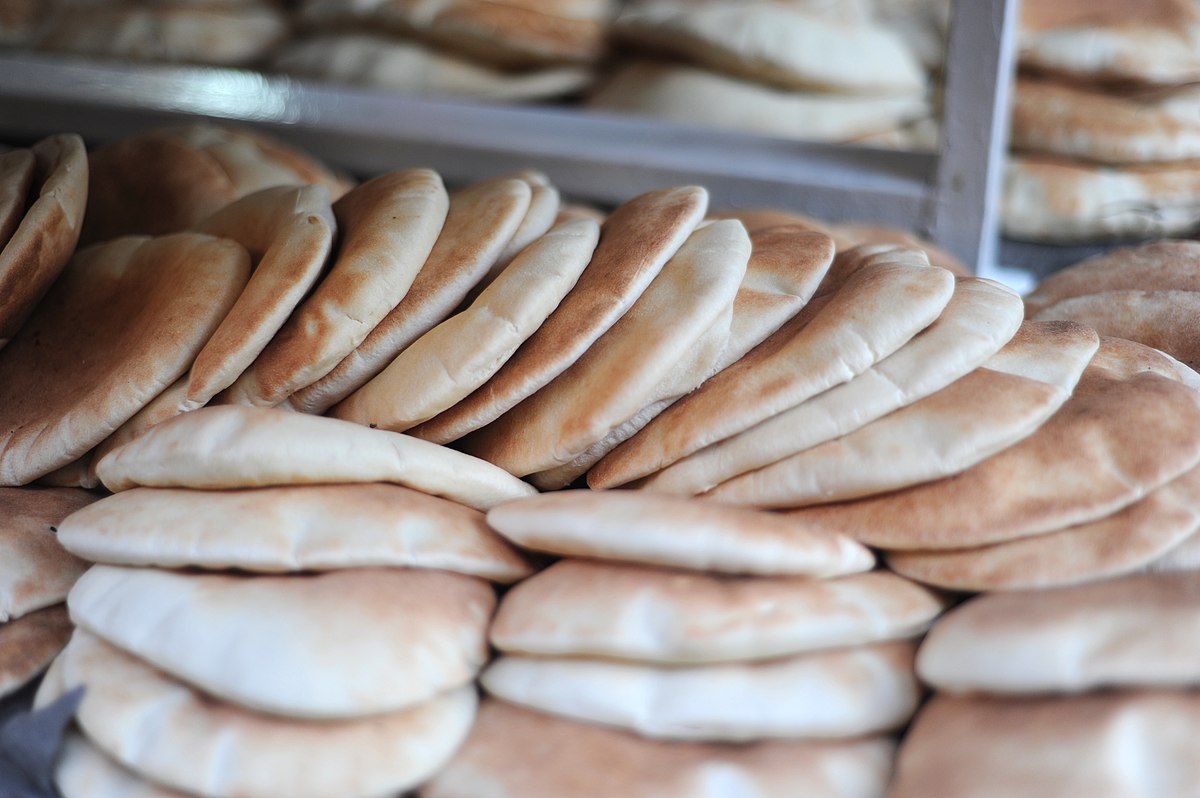Pita - Wikipedia
Your folders
Your folders

Ingredients
Export 1 ingredients for grocery delivery
Instructions
^ a b c d e .mw-parser-output cite.citation{font-style:inherit}.mw-parser-output .citation q{quotes:"\"""\"""'""'"}.mw-parser-output .id-lock-free a,.mw-parser-output .citation .cs1-lock-free a{background:linear-gradient(transparent,transparent),url("//upload.wikimedia.org/wikipedia/commons/6/65/Lock-green.svg")right 0.1em center/9px no-repeat}.mw-parser-output .id-lock-limited a,.mw-parser-output .id-lock-registration a,.mw-parser-output .citation .cs1-lock-limited a,.mw-parser-output .citation .cs1-lock-registration a{background:linear-gradient(transparent,transparent),url("//upload.wikimedia.org/wikipedia/commons/d/d6/Lock-gray-alt-2.svg")right 0.1em center/9px no-repeat}.mw-parser-output .id-lock-subscription a,.mw-parser-output .citation .cs1-lock-subscription a{background:linear-gradient(transparent,transparent),url("//upload.wikimedia.org/wikipedia/commons/a/aa/Lock-red-alt-2.svg")right 0.1em center/9px no-repeat}.mw-parser-output .cs1-subscription,.mw-parser-output .cs1-registration{color:#555}.mw-parser-output .cs1-subscription span,.mw-parser-output .cs1-registration span{border-bottom:1px dotted;cursor:help}.mw-parser-output .cs1-ws-icon a{background:linear-gradient(transparent,transparent),url("//upload.wikimedia.org/wikipedia/commons/4/4c/Wikisource-logo.svg")right 0.1em center/12px no-repeat}.mw-parser-output code.cs1-code{color:inherit;background:inherit;border:none;padding:inherit}.mw-parser-output .cs1-hidden-error{display:none;font-size:100%}.mw-parser-output .cs1-visible-error{font-size:100%}.mw-parser-output .cs1-maint{display:none;color:#33aa33;margin-left:0.3em}.mw-parser-output .cs1-format{font-size:95%}.mw-parser-output .cs1-kern-left,.mw-parser-output .cs1-kern-wl-left{padding-left:0.2em}.mw-parser-output .cs1-kern-right,.mw-parser-output .cs1-kern-wl-right{padding-right:0.2em}.mw-parser-output .citation .mw-selflink{font-weight:inherit}Marks, Gil (17 November 2010). Encyclopedia of Jewish Food. HMH. ISBN 9780544186316. ^ "Pita". Cambridge English Pronouncing Dictionary (18th ed.). Cambridge University Press. 2011. ^ Uvezian, Sonia (2001). Recipes and Remembrances from an Eastern Mediterranean Kitchen: A Culinary Journey Through Syria, Lebanon, and Jordan. Siamanto Press. p. 313. ISBN 9780970971685 – via Google Books. The best-known bread of the region is khubz arabi (or, simply, khubz), a round, flat, slightly leavened loaf about one-fourth inch thick and with a pocket inside. It is made in three different sizes: large (eight or more inches in diameter), medium (six to eight inches), and small (about five inches). In America, where it has become very popular, this bread is known as pita. A pocketless version is also available. In some Arab communities khubz arabi is called kmaj (from the Persian kumaj), while in others, kmaj refers only to the pocketless type. ^ Stewart, Jean E.; Tamaki, Junko Alice (1992). Composition of foods: baked products : raw, processed, prepared. 8. United States Department of Agriculture, Nutrition Monitoring Division. p. 6. ISBN 9780160380440. Pita bread originated in the Middle East and is also known as Arabic, Syrian, and pocket bread. ^ Perry, Charles (21 August 2014). Davidson, Alan (ed.). The Oxford Companion to Food. Oxford University Press. pp. 629–630. ISBN 9780191040726 – via Google Books. ^ Wright, Clifford A. (2003). Little Foods of the Mediterranean: 500 Fabulous Recipes for Antipasti, Tapas, Hors D'Oeuvre, Meze, and More. p. 61. ISBN 9781558322271. ^ Roden, Claudia (24 December 2008). The New Book of Middle Eastern Food. Knopf Doubleday Publishing Group. pp. 393–396. ISBN 9780307558565 – via Google Books. ^ Serna-Saldivar, Sergio O. (2012). Cereal Grains: Laboratory Reference and Procedures Manual. p. 215. ISBN 9781439855652. ^ "World's oldest bread found at prehistoric site in Jordan", The Jerusalem Post, 2018, retrieved 16 July 2018 ^ "Archaeologists find world's oldest bread and new evidence of sophisticated cooking dating back 14,000 years". The Independent. Retrieved 17 July 2018. ^ "Mastering the Art of Babylonian Cooking". The New York Times. Associated Press. 3 January 1988. ISSN 0362-4331. Retrieved 16 March 2019. ^ Bottéro, Jean (15 April 2004). The Oldest Cuisine in the World: Cooking in Mesopotamia. University of Chicago Press. pp. 47–49. ISBN 9780226067353 – via Google Books. ^ Helman, Anat (28 October 2015). Jews and Their Foodways. Oxford University Press. ISBN 9780190265434 – via Google Books. ^ a b c "pitta". Oxford English Dictionary (Online ed.). Oxford University Press. (Subscription or participating institution membership required.) ^ Aristotle University of Thessaloniki, Λεξικό της κοινής Νεοελληνικής ^ Liddell, Henry George; Scott, Robert; Jones, Henry Stuart. A Greek–English Lexicon. ^ Babiniotis, Georgios (2005). Λεξικό της Νέας Ελληνικής Γλώσσας [Dictionary of Modern Greek] (in Greek). Lexicology Centre. p. 1413. ISBN 960-86190-1-7. ^ The connection between picta and πηκτή is not supported by the OED s.v. 'picture' nor by Buck, Carl Darling, A Dictionary of Selected Synonyms in the Principal Indo-European Languages (1949). 9.85 "paint", p. 629 ^ Bracvini, G. Princi (1979). Archivio Glottologico Italiano. 64. pp. 42–89. Cited by the OED. ^ Kramer, J. (1990). Balkan-Archiv. 14–15. pp. 220–231. Cited by the OED. ^ Civitello, Linda (2007). Cuisine and culture: a history of food and people (Paperback ed.). Wiley. p. 98. ISBN 978-0471741725. ^ Cauvain, Stanley (2015). Technology of Breadmaking. New York: Springer. p. 232. ISBN 978-3-319-14687-4. ^ Bard, Kathryn A. (2005). Encyclopedia of the Archaeology of Ancient Egypt. London: Routledge. p. 178. ISBN 978-1-134-66525-9. ^ a b McNulty, Mary (2007). "Pita Bread". How products are made. Retrieved 8 May 2018. ^ Tanis, David (21 February 2014). "Homemade Pita Bread". The New York Times. Retrieved 8 May 2018. ^ Colon-Singh, Rose (12 June 2012). "Make Flatbread | Turkish Pide Recipe". Fine Dining Lovers. Retrieved 10 December 2018. ^ "Dayi'nin Yeri Turkish Restaurant, Cliffside Park, NJ". www.chowgofer.com. Retrieved 10 December 2018. ^ Elise, Lola (16 December 2009). "Pide Recipe". Tasty & Healthy Arbuz. Retrieved 10 December 2018. ^ Babs, Serena (17 January 2011). "Turkish Pizza aka Kiymali Pide". Tasty Kitchen. Retrieved 10 December 2018. ^ Ιφιγενεια Βιρβιδακη, Νενα Δημητριου, Νικολετα Μακρυωνιτου, Καλλιοπη Πατερα, "Tα καλύτερα ψωμιά των Αθηνών", Γαστρονόμος, Η Καθημερινή, 21 September 2016 ^ Ιφιγενεια Βιρβιδακη, Νενα Δημητριου, Νικολετα Μακρυωνιτου, Καλλιοπη Πατερα, "Tα καλύτερα ψωμιά των Αθηνών", Γαστρονόμος, Η Καθημερινή, 21 September 2016 [1]